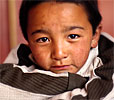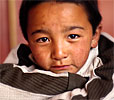Teacher Resources and Support Strategies for Overwhelmed Educators

Check out our blog for social-emotional learning articles, news, and more!

View the PowerPoint presentation

Also of related interest: The Spokes Project: Supporting Parents On Kids Education Department Of Health Project Funded By The Parenting Initiative Authors: Stephen Scott, Reader in Child Health and Behaviour, Institute of Psychiatry, King's College London and the Maudsley Hospital, and Kathy Sylva, Professor of Educational Psychology, University of Oxford.
Executive Summary
Background:
The objective of supporting parents is to enable them to develop a nurturing, stimulating relationship with their child, so they develop the child's emotional and intellectual well-being. The question arises how best to support parents. This project sought to implement and evaluate a programme to support directly improvement of the quality of the parent-child relationship, rather than address the indirect factors that can stress it.
The consequences of inadequate parenting often lead to child behavioural difficulties and school failure. Without effective intervention, the behaviour problems have a high degree of continuity and lead to behaviours such as theft, violence to persons and property, and use of illegal drugs; disorders such as alcoholism, drug dependence, and antisocial personality disorder. The school failure has a high continuity with unemployment and receipt of state benefits. The children grow up into adults with a high rate of marital violence, family break-up, and abuse of the next generation of children. These difficulties contribute to a greatly increased economic cost - one recent UK study showed that by the time they are 28 years old, individuals who were antisocial as children cost society ten times more than children without it. There is therefore a need for effective intervention to prevent serious, lifetime social exclusion of children, and strain and distress of parents. To address the need for early intervention, this project operated early, when the children were 5 and 6 years old in primary school.
Nature of Project:
This project carried out an innovative community-based intervention to support parents in managing the two sets of child difficulties for which they most frequently seek help, namely behaviour and learning. Its aim was to see whether this parenting support package would improve the functioning of the children at risk for social exclusion, by looking at two crucial outcomes: reduction in antisocial behaviour; and their reading ability, a central skill for coping throughout life. Implementation questions Question one: Could the groups easily be held in an everyday life venue - the local primary school, so that it could be widely replicated? Question two: Would a substantial proportion of parents with children at risk choose to enrol in the courses? Question three: Would the starting population taken as a whole show improvement? Even if there were useful improvements in those parents who attended most of the course, some would drop out.
Parent support programme
The intervention package was delivered in 8 primary schools over three school terms. In term 1 there was a basic 12 week parenting course addressing the parent-child relationship and how to handle difficult child behaviour, in term 2 there was a 10 week reading programme, and in term 3 a 6 week combined course.
Term one: Personal development program. This was the basic "Incredible Years" Webster-Stratton videotape parenting programme, backed up by home visits to maximise effectiveness. The scenes show parents and children in a variety of common situations, with the parents sometimes behaving in a way that leads to the child being calm and obedient, and sometimes in a way which leads the child to be miserable and have tantrums. Through careful observation and group discussion, the elements that led to successful child management were drawn out, and then parents role-played how they would apply these with their own children. They were then given homework to put this into practice during the following week.
Term two: Intervention to support child literacy development. Professor Sylva and the team devised a new intervention with relatively intensive parental involvement and considerable specific instruction in technique. It centred around engaging maximal parental commitment and giving parents detailed training in how to encourage and shape reading skills in their child. The literacy intervention lasted 10 weeks.
Term three: Combined program. This addressed communicating and problem solving with your child, and had a top-up element for literacy. It lasted six weeks.
Results
Sample Strengths and Difficulties Questionnaires (SDQs) were completed on 733 reception and year one children by teachers, representing 99.5% of children in their classes. Parents of 433 children returned SDQs, a rate of 61%. 394 were correctly filled in and usable. A cutoff score was applied, giving 134 or 34% of the sample, who were deemed at risk of social exclusion through a high level of antisocial behaviour. 103 took part. The sample was a typical inner-city, multi-ethnic disadvantaged population. Half of the children were allocated to the parent support programme, the control half were offered an advice helpline. All 8 schools approached were extremely cooperative and welcomed the project.
Attendance by parents allocated to the intervention Personal development programme (term 1) mean attendance was 7 out of a maximum 12 sessions. Literacy programme (term 2) the mean was 6 out of a possible 10 sessions. Combined programme (term 3) the mean was 4 out of a possible 6 sessions.
Child Behavior:
Antisocial behavior: On the primary outcome, the PACS interview score, there was a significant effect in favour of the intervention group. The effect size was 0.51 standard deviations, substantial for a prevention trial. The reduction in antisocial behaviour corresponds to an improvement for the participants from being within the worst 15% of antisocial children to being outside the most antisocial 35%. The effect size for hyperactivity was also significant, 0.43. Hyperactivity is an important independent risk factor for social exclusion.
Parent defined problems: Problems parents reported included arguing, disobedience, fighting, whining, spitefulness, jealousy etc. The intervention group showed a significant improvement compared to the controls, with an effect size of 0.64.
Eyberg Child Behaviour Inventory.
The Intensity Score, which is a measure of the frequency of difficult behaviours, reduced significantly more in the intervention group, with an effect size of 0.28.
Parent Satisfaction 93% of parents said they were well or extremely satisfied with the programme.
Child Literacy:
The intervention group gained seven months in reading skills, an effect size of 0.43. This result held up unchanged after multiple regression correction for age and gender. Race, parent education, parent income, and child age and gender did not affect degree of change in the intervention group compared to the control group, suggesting that the programme is robust and suited to disadvantaged populations.





